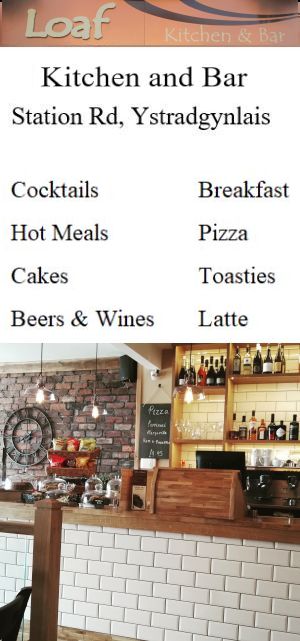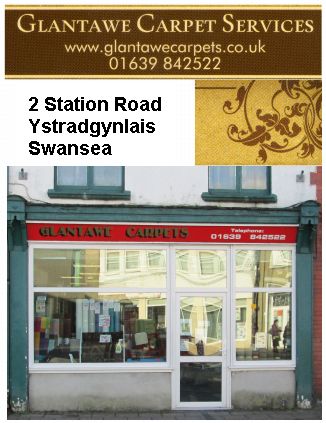Ystalyfera
History and Heritage
The Jewish Cemetery, Mayhill, Swansea
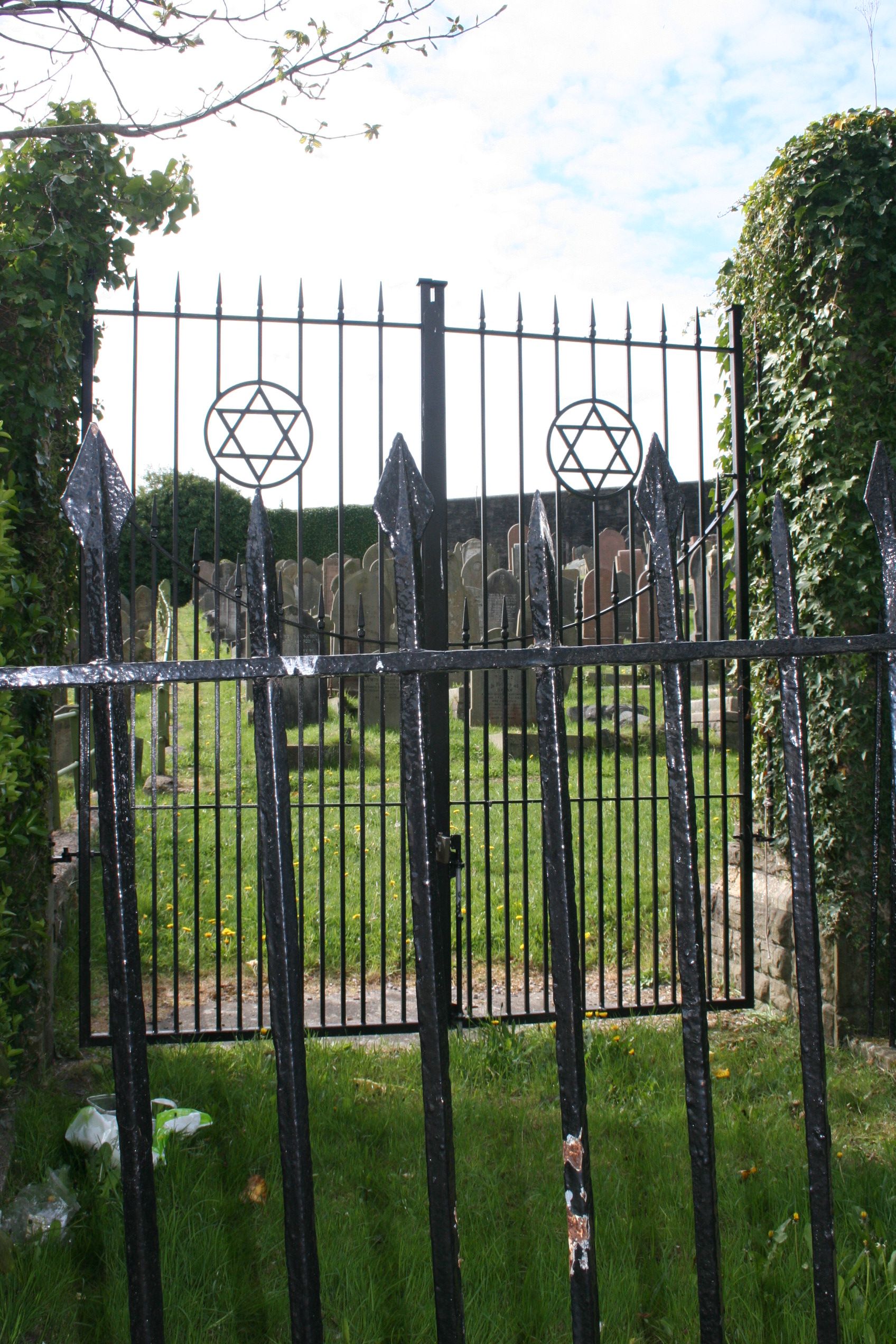
As usual, when I find some article on my travels through the newspapers of yesteryears, one or two stick out and I have that urge to go and investigate further. The Cambrian had provided me with 'that detour' although I had not done anything about it until I came across another piece of journalism which then spurred me into action.
We reproduce below, the article from The Cambrian in its original, dated language, meaning no offence. Below it is a summary of a 2009 article from The Daily Telegraph recording how former Conservative Party leader, Lord Howard of Lympne, helped to restore the cemetery and arranged for the transportation of his late father's body from it, to lie beside that of his recently deceased mother in London.
Thank You very much to Lord Howard for permission to use this.
From The Cambrian newspaper, 29th January 1897, 'Sketches In and Around Swansea' :-
THE JEWS' BURYING GROUND
It is not for a stranger - for thus the Jew regards a member of a Christian community - to explain why the summit of Town Hill was selected as a site for a cemetery, and there do not appear to exist any records affording an explanation. One can conceive, however, that in those days, which were prior to the introduction of the copper and iron industries, and to the rapid growth of the town as a consequence, there could have been no lack of sites. Again, what- ever may have been the attractions of Town Hill, the natural beauty of the spot cannot have been one. At present, there is nothing about the place that lends to it any charm, but its altitude: and there is no trace that it was otherwise than devoid of natural beauty a century ago. Upon lower ground the Jewish community were surrounded with many beautiful and accessible sites, upon which they could have built their cemetery, and thereby more fitly carried out the letter of the Biblical statement, which states the burial place of Moses to have been "in a valley in the land of Moab, over against Beth-poer." There are many Biblical and Talmudical statements which seem to indicate that there is more fitness in a valley as a burial-ground than in an elevated spot. There "Valley" and "Death'' are two words which often accompany each other in contemplations on death. The Psalmist spoke of walking in the valley of the shadow of death." In his mind there was something about the low natural position of the valley reflective of death. None of such considerations can have actuated the Jewish community when they selected the present site.
Why they selected it still remains a mystery. Perhaps some old inhabitant is able to throw light on the matter. Thus unacquainted with the reasons for the selection of the site, there is also no record to show the exact date it was built. But here one is able to say that the first burial dates back about 130 years. It was that of a Jewess who was a native of Carmarthen, where her death took place, but whose body, in the absence of a cemetery at Carmarthen, was interred in Swansea. For nearly a century, it continued to be the only Jewish burial place in South Wales. Up to thirty years ago, Jewish residents of this part of the county, even so far east as Newport, brought their dead to Swansea. It would be considered a grave violation of some of their most sacred burial rites to inter a deceased Jew or Jewess in a Christian churchyard; and there is a striking: manifestation of how sincerely attached they are to their ancient customs given in their undertaking to walk distances so great for the sake of a burial.
The Swansea Jewish Cemetery took its present structural form about 32 years ago. Until 1864 the ground had been held under a lease from the Corporation. That lease appears to have been lost and with it perhaps much interesting information. In 1864, the Swansea Corporation sold to the local Jews the freehold of the Cemetery, which at that time covered only 15 perches of land, and also that of an additional 15 perches. With an expenditure of £200 the present walls were built, and also a small room inside called the mortuary. There the bier is kept. In that year Charles Bath, Esq., was Mayor of Swansea. The deed of conveyance bears the signature of his Worship the Mayor and also that of Mr James Hall, who was then Surveyor for the Corporation. Mr James Hall was the father of Dr. J G Hall J.P., and was well known in his day. The deed also bears the signatures, as trustees, of Benjamin Joseph, Jacob Joseph, Isaac Jacobs, Mordecai Harris, and Simon Goldberg. Of these gentlemen Mr Simon Goldberg, J.P., is the only living trustee and, by the way, it may be stated that Mr Goldberg is at present the oldest member of the Jewish community at Swansea, both by age and also as a member of the Synagogue. As the other trustees passed away, their offices were filled by others, and on the front wall of the Cemetery there may be seen to this day an old stone upon which have been cut the names, now hardly legible, of Jacob Marks, Isaac Seline, Joel Jacobs, Barnett Freedman, and Simon Goldberg.
The Jewish Cemetery is rarely remarkable for any magnificence. Simplicity in matters which concern the dead is a thing which the Jews rigidly observe; and in their cemeteries this simplicity is very marked. The Hebrew looks upon the grave as a gate to eternal life: hence the title "House of Life" under which their burial places are known to them. According to the Christian method of burial, the nature of a person's death does not render necessary any distinction in the manner of burial, nor the place of burial. Under Jewish customs, however, distinctions are made. For instance, a Jew who commits suicide is placed in a part of the graveyard apart from that where those are buried who die natural deaths. No suicide has been interred in the Swansea Cemetery, but the Talmud declares it, and the custom is sedulously and universally adopted. No interment takes place on a Sunday.
A visit to the Swansea Jews Cemetery will show one how zealous the local community have always been to give effect to their Old Talmudical customs concerning the dead and the burial place. Here there is none of that beauty and loveliness which form such pleasing features of many a Christian Cemetery: as for instance the Mumbles Cemetery. Here everything is of the simplest nature - no sculptural adornments, nor floral attractions in any way. These are considered objectionable.
The Cemetery is now nearly full. The graves and tombs are arranged in parallel rows from east to west. The stones are all plain and common. Each has an account in Hebrew concerning the deceased. His or her name, the date of death (Hebrew dates) and generally a Hebrew quotation from the Bible are given. The graves and tombs number a little over 200. The ruthless hand of Time has shaken many of them and they have fallen; others are inclined one towards the other and they lead one to think of the sad neglect to which the miserably situated cemetery has been subject.
Of course the majority of the graves are those of residents of Swansea, but amongst the stones at the head of the graves of residents outside of Swansea is one bearing the following inscription:
"In affectionate remembrance of David Lazurus Samuel, of Neath, who departed this life on 30th April 1874, aged 63. During his lifetime he was ever an upright and a straightforward man, God fearing and ever going in the path of righteousness. To his wife and children he imparted his virtues. In the town where he lived he erected a synagogue, there performing his duty to his God until the end of his days. His loss is lamented by his sorrowing wife and children to whom he was ever an affectionate and devoted husband and father: and also, lamented by a circle of friends by whom in life, he was greatly respected and now much deplored. May his soul rest in peace."
There is a tombstone "sacred to the memory of Levi Michael of Swansea, who died 29th of November, 5602 (1841) in the 87th year of his age, beloved by his family and friends and esteemed and respected by all who knew him.
He is supposed to have been the first of the Jewish persuasion ever born in the Principality of Wales"
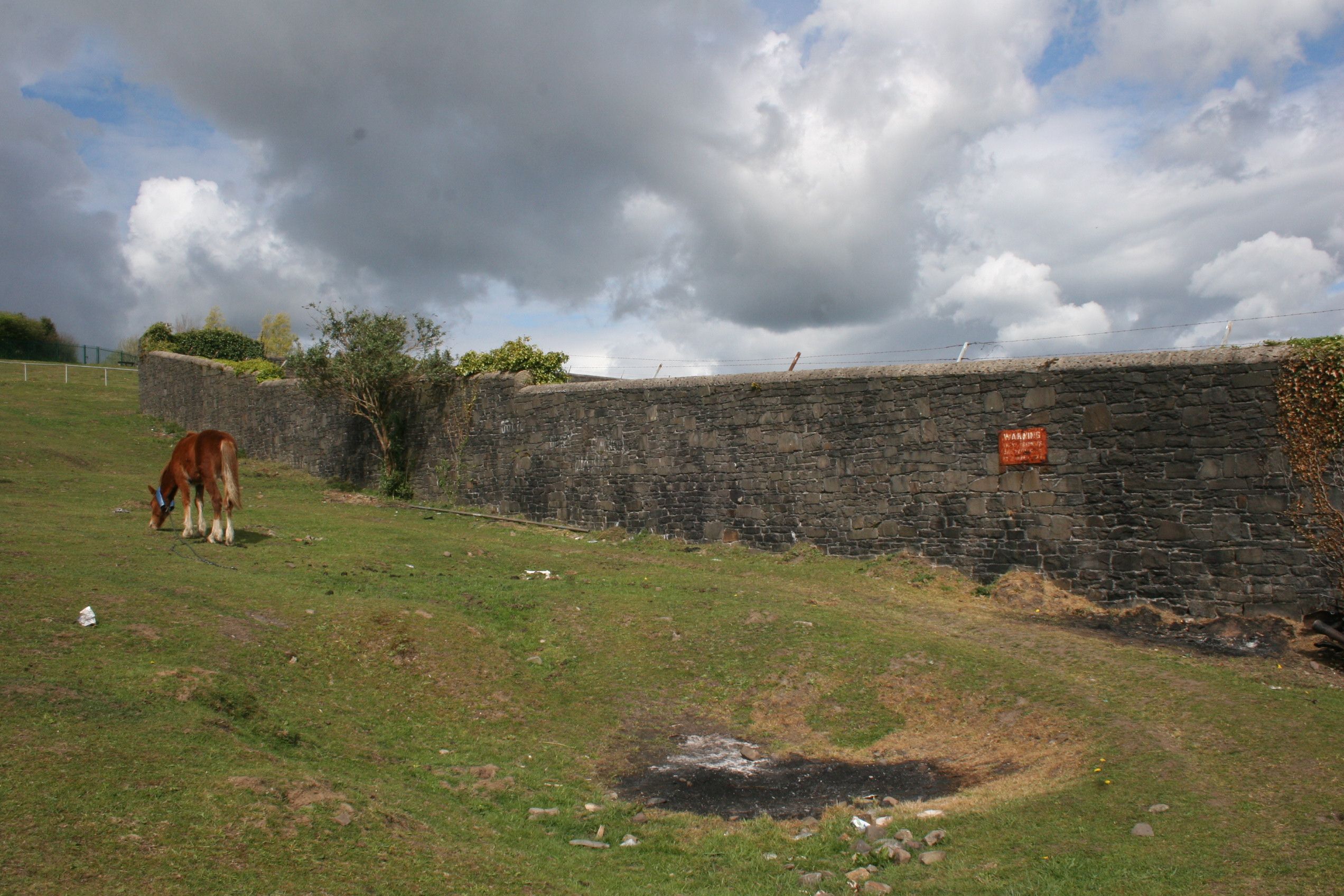 Thank You to Lord Howard of Lympne for giving us permission to use the article from the Daily Telegraph from 21st December 2009. We print it here for educational purposes only, and acknowledge that copyright remains with the original author.
Thank You to Lord Howard of Lympne for giving us permission to use the article from the Daily Telegraph from 21st December 2009. We print it here for educational purposes only, and acknowledge that copyright remains with the original author.
More than 40 years after his death, the body of Bernard Howard has been transferred to a Jewish cemetery in London.
The exhumation was instigated by Mr Howard's wish for his father to be buried in the same cemetery as his recently-deceased mother.
A team from United Synagogue (US), an organisation of London-based Jews, also carried out a two-day restoration of the cemetery.
Bernard Howard was buried in Townhill Jewish Cemetery, Swansea, south Wales, in 1966.
News of the unusual move was issued through a press release which appeared on the official website of the United Synagogue:
"Michael Howard has helped to pay for the restoration of a vandalised Jewish cemetery in Swansea, where his father was buried. The United Synagogue's burial team was asked to restore Townhill Cemetery, which is now closed, by Mr Howard and the local Jewish community. Mr Howard, the former Conservative leader, offered to pay for some of the team's expenses and asked for his father, who was buried there in 1966, to be moved to Bushey cemetery to join his late mother. The team spent two days restoring knocked over stones and cutting back overgrown brambles in the cemetery, which is not affiliated to the US. Melvyn Hartog, head of burial services at the US, said: "The restoration of a non-US cemetery is not something we would normally get involved in but we felt we couldn't leave the cemetery in such disrepair."
Mr Howard said: "I cannot speak highly enough about the way in which the US burial staff conducted themselves and the work they carried out. The cemetery was in a state of disrepair but after the team's extremely hard work, this very old and important Jewish cemetery has been restored to a much more dignified condition. I would also like to personally thank Melvyn Hartog and his team for bringing my father back to London to rest in peace alongside my recently departed mother."
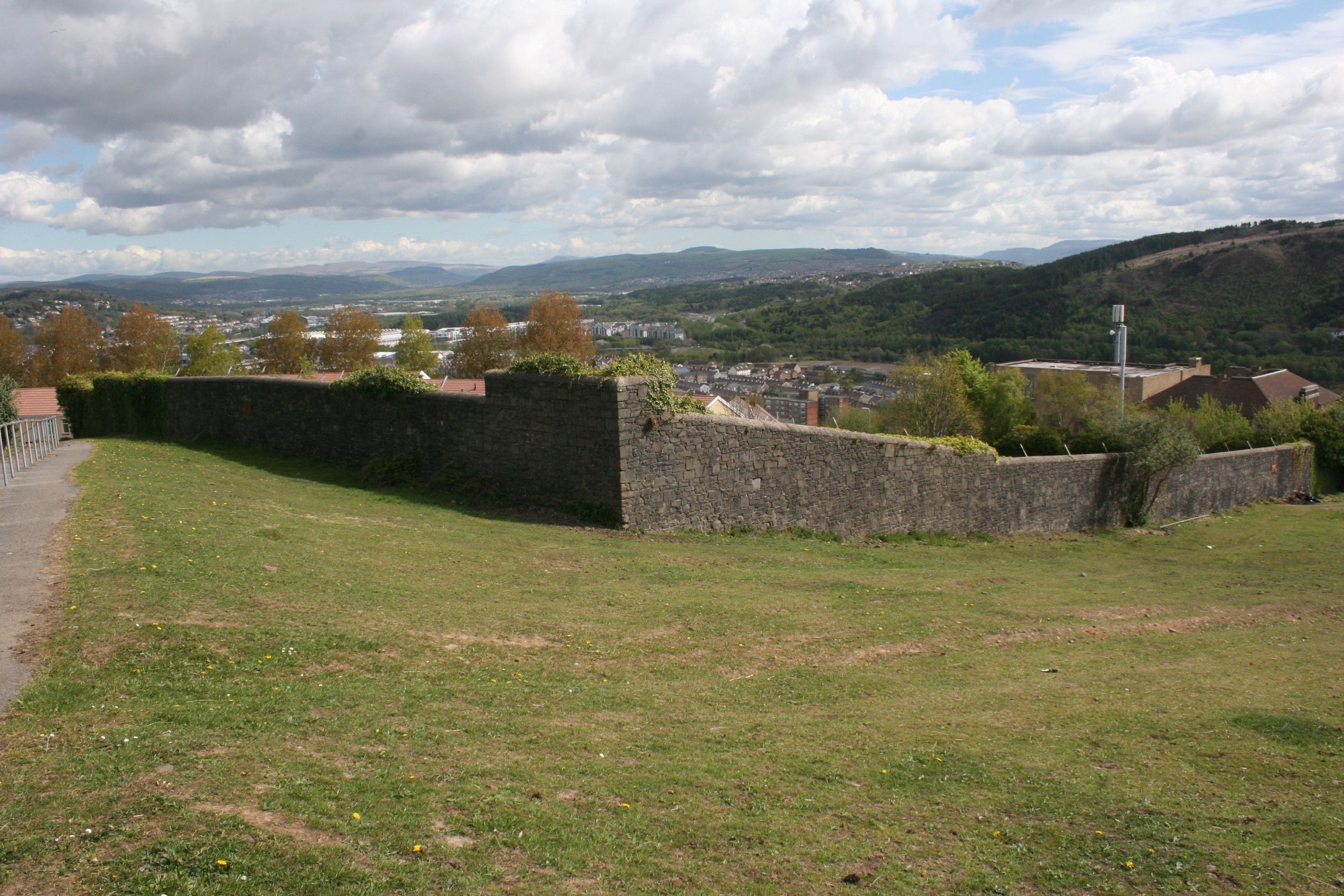
When I finally managed to make a visit to this remote site more or less on top of the mountain, I found a very high wall with wire along the top and the gates locked but the view was superb.
To the right, the walls of the Jewish Cemetery, Swansea.
Article, Photographs and Commentary by Val Trevallion
You can contact Ystalyfera History by emailing: contact@greywolfwebdesign.com or Val Trevallion by emailing yeargroup@hotmail.co.uk.
Swansea Valley - South Wales
Jewish Cemetery, Swansea
- Lost Landmarks of Ystalyfera
- Ystalyfera Then and Now
- Our Feathered Friends
- Ystalyfera Swimming Pool
- Pantteg Murder
- British Legion, Ystalyfera
- Bronchitis Valley
- Ystalyfera Cemeteries
- Storm Damage
- Cemetery Damage
- A Sacred Promise
- Historian Noel Watkins
- Yan Boogie - Eileen Baker
- Dangerous Bridges
- Interesting Snippets
Email Yeargroup:
yeargroup@hotmail.co.uk
Email Wolfian Design:
webdesign@wolfianpress.com

Click the cover to purchase the paperback
How To Write Alternate History is a series of articles by Grey Wolf, examining subjects such as the identity of man, whether man makes the weather, how the everyday in an alternate world is going to be changed and what names for music, vehicles, weapons etc would be different.


